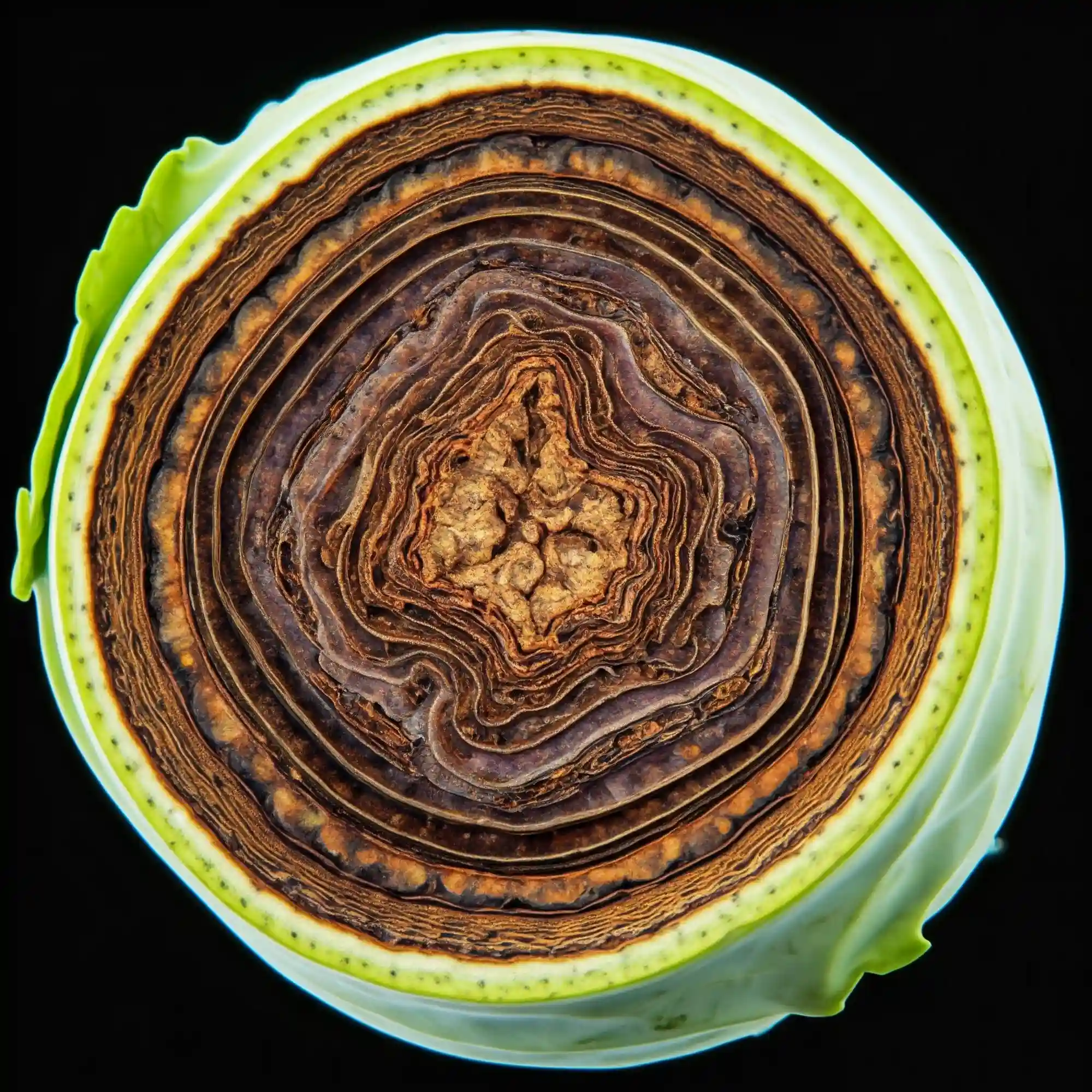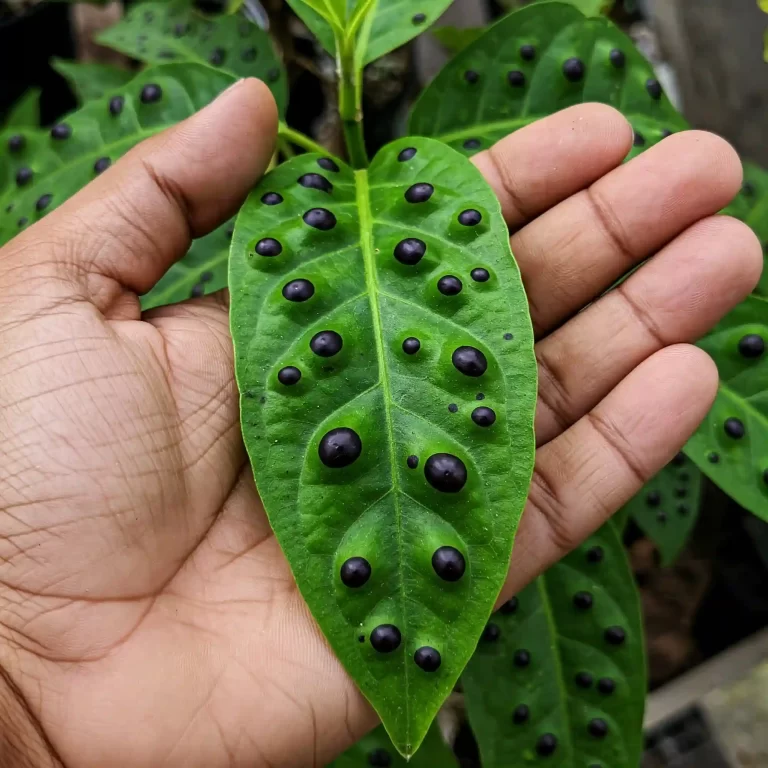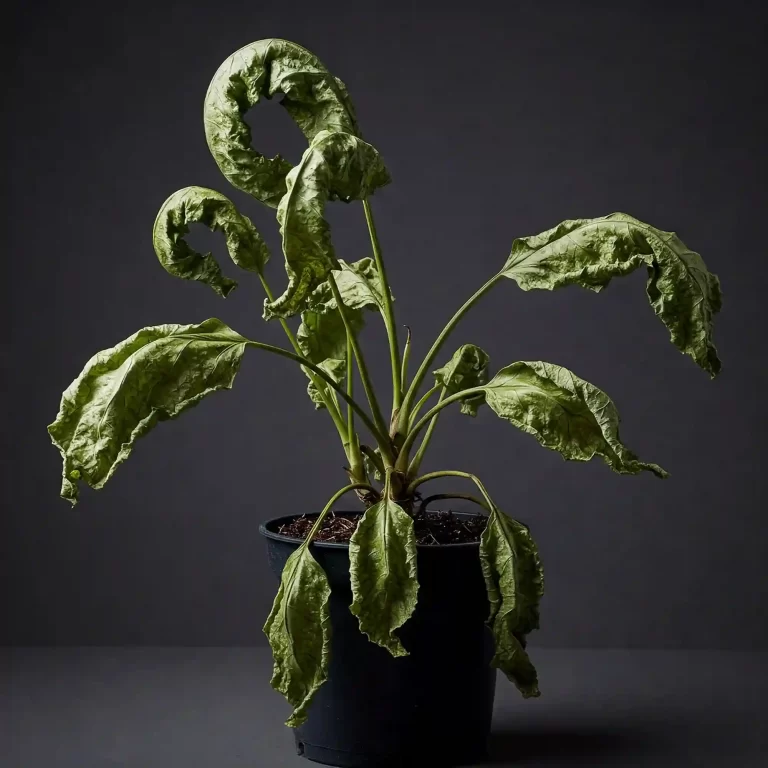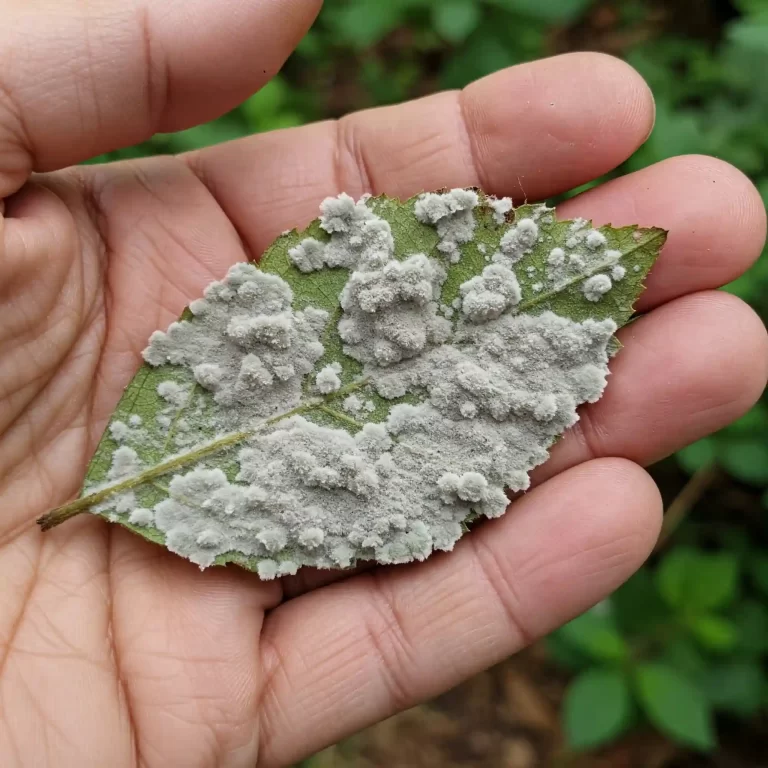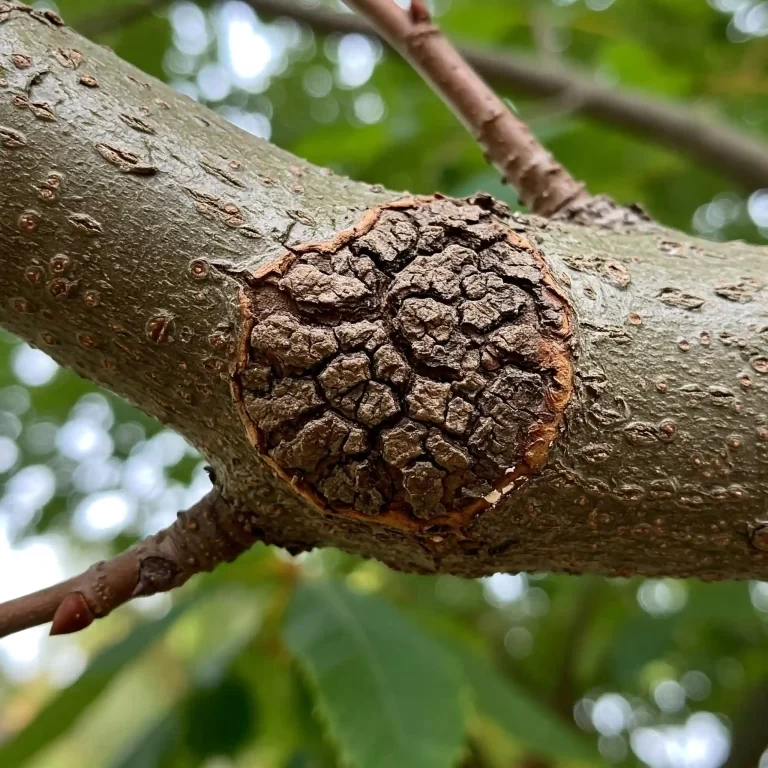Have you ever walked out to your garden, eager to check on your thriving brassicas, only to be met with the disheartening sight of wilting, blackened stems? It’s a gut-wrenching feeling, especially after all the hard work you’ve put in. This devastating scene is often the work of a disease called black leg, a common yet serious problem that can wipe out entire crops if left unchecked. I’ve experienced this firsthand, losing a significant portion of my kale crop one season to this very disease. The frustration and disappointment were immense. But there’s good news: with the right knowledge and proactive steps, you can effectively manage and even prevent black leg from wreaking havoc in your garden. This comprehensive guide provides you with the crucial information you need to protect your plants and ensure a bountiful harvest. I understand how important your garden is to you, and I’m here to help you navigate this challenge.
What is Black Leg Disease?
Black leg is a plant disease that affects a wide range of plants, but it’s particularly notorious for targeting brassicas—the cabbage family, including broccoli, cauliflower, Brussels sprouts, kale, collards, turnips, and radishes. Potatoes, tomatoes, and even some cucurbits (like cucumbers) can also be susceptible, although less frequently. This disease is caused by various fungal and bacterial pathogens. The most common culprit in brassicas is the fungus Leptosphaeria maculans, also known by its older name, Phoma lingam. In potatoes, a bacterial pathogen, Dickeya solani, is often the cause.
From my experience, understanding the specific pathogen is less important for the average gardener than recognizing the symptoms and knowing how to manage the disease. The core problem is that these pathogens attack the base of the plant stem, right at or just below the soil line. They cause dark, sunken lesions or cankers that can completely girdle the stem. This girdling disrupts the plant’s vascular system, preventing the flow of water and nutrients from the roots to the rest of the plant. The result? Wilting, stunted growth, and ultimately, if left untreated, plant death.
Here’s a breakdown of the key characteristics of black leg:
- Pathogens: Primarily fungal (Leptosphaeria maculans in brassicas) and bacterial (Dickeya solani in potatoes).
- Target Plants: Primarily brassicas (cabbage, broccoli, cauliflower, kale, etc.), potatoes, and sometimes tomatoes and cucumbers.
- Affected Plant Parts: Stems (especially at the base), roots, and sometimes leaves and tubers (in potatoes).
- Primary Symptom: Dark, sunken lesions or cankers on the stem near the soil line.
Pathogen Comparison
| Feature | Leptosphaeria maculans (Fungus) | Dickeya solani (Bacteria) |
| Primary Hosts | Brassicas | Potatoes |
| Spread | Wind, rain splash, contaminated tools | Contaminated seed, soil, water |
| Favorable Conditions | Cool, wet weather | Warm, moist conditions |
| Survival | Crop debris, soil | Soil, tubers |
The fungal form of black leg, caused by Leptosphaeria maculans, thrives in cool, wet conditions, which is why I often see outbreaks during periods of extended rainfall or in poorly drained gardens. The fungal spores can survive in crop debris and in the soil for several years, making crop rotation an essential prevention strategy. The bacterial form, often associated with potatoes and caused by Dickeya solani, tends to be more prevalent in warmer, moist conditions and can be spread through contaminated seed potatoes, soil, and irrigation water. This highlights the importance of using certified disease-free seed potatoes.
Understanding the basic biology of these pathogens helps you make informed decisions about Prevention, Control, Management, Care, and Protection strategies in your garden. By recognizing the symptoms early and understanding the conditions that favor black leg development, you can take proactive steps to protect your plants.
Identifying Black Leg: What Does Black Leg Look Like?
Identifying black leg early is crucial for effective management. From my experience, the symptoms can vary slightly depending on the affected plant, but there are some key signs to watch for. If you observe any of these symptoms, it’s essential to take action quickly to prevent the disease from spreading.
Symptoms on Brassicas (Cabbage, Broccoli, etc.):
The most characteristic symptom of black leg on brassicas is the appearance of dark brown or black lesions at the base of the stem, often right at or just below the soil line. These lesions can be sunken or cracked and may girdle the stem, restricting the flow of water and nutrients. You might also notice:
- Stunted growth: Affected plants may be smaller than healthy ones.
- Wilting: Leaves may wilt or droop, even when the soil is moist.
- Premature leaf drop: Lower leaves may turn yellow and drop off.
Symptoms on Potatoes:
In potatoes, black leg primarily affects the stem below the soil surface, causing a black, slimy rot. You might also observe:
- Wilting and yellowing of foliage: Similar to brassicas, the above-ground parts of the plant may show signs of stress.
- Blackening of tubers: In some cases, the tubers themselves can develop dark lesions.
Symptoms on Other Plants:
While less common, black leg can also affect other vegetables and ornamentals. The symptoms are generally similar: dark lesions on stems or roots, leading to wilting and decline.
Distinguishing Black Leg from Other Diseases:
It’s important to distinguish black leg from other common plant diseases, such as damping-off and clubroot. Damping-off typically affects young seedlings, causing them to collapse and die. Clubroot, on the other hand, causes swollen, distorted roots. By carefully observing the symptoms, you can accurately diagnose black leg and take appropriate action.
Here’s a table summarizing the key symptoms of black leg on different plants:
Black Leg Symptoms on Different Plants
| Plant Type | Symptoms |
| Brassicas | Dark brown or black lesions at the base of the stem, sunken or cracked lesions, stem girdling, stunted growth, wilting, premature leaf drop |
| Potatoes | Black, slimy rot of the stem below the soil surface, wilting and yellowing of foliage, blackening of tubers |
| Other Plants | Dark lesions on stems or roots, wilting, decline |
By familiarizing yourself with these symptoms, you can quickly identify black leg in your garden and take steps to protect your plants. Early detection and intervention are crucial for preventing the disease from spreading and minimizing its impact on your harvest.
What Causes Black Leg? Understanding the Culprits.
Understanding the causes of black leg is essential for effective prevention and control. From my experience, I’ve learned that this disease is primarily caused by two main types of pathogens: fungi and bacteria. While both can cause similar symptoms, they have different life cycles and thrive in slightly different conditions.
Fungal Pathogens:
The most common fungal pathogen responsible for black leg, especially in brassicas, is Leptosphaeria maculans. This fungus thrives in cool, wet conditions, which is why I often see outbreaks during periods of extended rainfall or in poorly drained gardens. The fungal spores can survive in crop debris and in the soil for several years, making crop rotation an essential prevention strategy.
Bacterial Pathogens:
In potatoes, a bacterial pathogen, Dickeya solani, is often the cause of black leg. This bacterium tends to be more prevalent in warmer, moist conditions and can be spread through contaminated seed potatoes, soil, and irrigation water. This highlights the importance of using certified disease-free seed potatoes.
Environmental Factors:
In addition to the presence of pathogens, certain environmental factors can increase the risk of black leg development:
- Cool, wet weather: As mentioned earlier, cool, wet conditions favor the development of fungal black leg.
- Poorly drained soil: Waterlogged soil creates an ideal environment for pathogens to thrive.
- Crowded plantings: Overcrowding can reduce air circulation and create humid conditions that favor disease development.
- Wounds: Injuries to plant stems can provide entry points for pathogens.
Disease Cycle:
Understanding the disease cycle of black leg can help you implement effective control measures. The pathogens can survive in crop debris and in the soil for extended periods. When susceptible plants are present, the pathogens can infect them through wounds or natural openings. The disease can then spread through wind, rain splash, contaminated tools, and even insects.
Key takeaways:
- Black leg is caused by both fungal and bacterial pathogens.
- Cool, wet conditions favor fungal black leg, while warmer, moist conditions favor bacterial black leg.
- Environmental factors such as poorly drained soil and crowded plantings can increase the risk of disease development.
- Understanding the disease cycle can help you implement effective control measures.
7 Crucial Steps: Treating Black Leg and Saving Your Plants.
While preventing black leg is always the best approach, sometimes, despite our best efforts, our plants can still become infected. If you find yourself facing an outbreak of black leg in your garden, don’t despair. There are several steps you can take to manage the disease and save your plants. From my experience, a combination of these methods often provides the best results.
1. Remove Infected Plants:
The first and most crucial step is to remove any infected plants from your garden immediately. This will help prevent the disease from spreading to healthy plants. When removing infected plants, be sure to:
- Carefully dig up the entire plant, including the roots.
- Avoid composting infected plant material, as this can spread the disease.
- Dispose of infected plants in a sealed bag or burn them.
2. Improve Soil Drainage:
Black leg thrives in wet conditions, so improving soil drainage is essential for controlling this disease. You can improve soil drainage by:
- Adding organic matter to the soil, such as compost or well-rotted manure.
- Creating raised beds or mounds to improve drainage.
- Avoiding overwatering.
3. Crop Rotation:
Crop rotation is an effective way to prevent black leg from building up in the soil. By rotating your crops, you can disrupt the disease cycle and reduce the risk of infection. When planning your crop rotation, be sure to:
- Avoid planting susceptible crops in the same area for at least 3-4 years.
- Rotate with non-susceptible crops, such as legumes or grasses.
4. Soil Solarization:
Soil solarization is a non-chemical method of controlling soilborne diseases, including black leg. This technique involves covering the soil with clear plastic during the hottest part of the summer. The heat trapped under the plastic can kill many pathogens in the soil.
5. Fungicides and Bactericides:
In some cases, fungicides or bactericides may be necessary to control black leg. However, it’s important to use these products carefully and follow label instructions. When using fungicides or bactericides:
- Choose products that are specifically labeled for use against black leg.
- Apply products early in the disease cycle for best results.
- Avoid using the same product repeatedly, as this can lead to resistance.
6. Seed Treatment:
Seed treatment can help protect seedlings from black leg. This involves treating seeds with a fungicide or hot water before planting.
7. Sanitation Practices:
Good sanitation practices can help prevent the spread of black leg. This includes:
- Cleaning gardening tools and equipment regularly.
- Removing crop debris from the garden at the end of the season.
- Avoiding overhead watering, which can spread pathogens.
By following these steps, you can effectively manage black leg in your garden and protect your precious plants. Remember, early detection and intervention are key to preventing this disease from causing significant damage.
Prevention, Control, Management, Care, Protection: Preventing Black Leg in Your Garden.
Prevention, as they say, is better than cure. This is especially true when it comes to plant diseases like black leg. From my years of gardening, I’ve learned that a proactive approach is the most effective way to keep this disease at bay. Here are some key strategies for preventing black leg in your garden:
1. Choose Resistant Varieties:
One of the most effective ways to prevent black leg is to choose plant varieties that are resistant to the disease. Many seed companies offer resistant varieties of brassicas, potatoes, and other susceptible crops. When selecting varieties, look for labels that indicate resistance to black leg or other relevant diseases.
2. Practice Proper Plant Spacing:
Proper plant spacing is essential for good air circulation and can help prevent black leg. When planting, be sure to follow the recommended spacing guidelines for each crop. This will help reduce humidity around the plants and create a less favorable environment for disease development.
3. Water Wisely:
Watering practices can play a significant role in preventing black leg. Avoid overhead watering, which can wet the foliage and create conditions that favor disease development. Instead, water at the base of the plants, using a soaker hose or drip irrigation system.
4. Maintain Healthy Soil:
Healthy soil is essential for healthy plants. Amend your soil with organic matter, such as compost or well-rotted manure, to improve drainage and aeration. This will help create a less favorable environment for pathogens.
5. Practice Crop Rotation:
Crop rotation is an effective way to prevent black leg from building up in the soil. By rotating your crops, you can disrupt the disease cycle and reduce the risk of infection. Avoid planting susceptible crops in the same area for at least 3-4 years.
6. Sanitize Your Tools:
Contaminated gardening tools can spread black leg from one plant to another. Be sure to clean your tools regularly with a disinfectant solution, such as bleach or rubbing alcohol.
7. Start with Disease-Free Seed and Transplants:
Starting with disease-free seed and transplants is essential for preventing black leg. Purchase seeds and transplants from reputable sources and inspect them carefully for any signs of disease before planting.
By following these prevention strategies, you can significantly reduce the risk of black leg in your garden and enjoy a healthy, bountiful harvest.
Frequently Asked Questions (FAQs)
I’ve compiled a list of frequently asked questions about black leg disease to provide you with quick and easy answers to common concerns. These are questions I often get from fellow gardeners, and I hope they’ll be helpful to you as well.
General Questions:
- What is black leg disease? Black leg is a plant disease caused by fungal or bacterial pathogens that affect the base of the plant stem, causing dark lesions and potentially leading to wilting and plant death.
- What plants are most susceptible to black leg? Brassicas (cabbage, broccoli, cauliflower, kale, etc.) and potatoes are particularly susceptible, but other vegetables and ornamentals can also be affected.
- How does black leg spread? Black leg can spread through wind, rain splash, contaminated tools, infected seed or transplants, and even insects.
- Is black leg harmful to humans or animals? No, black leg is a plant disease and does not pose a direct threat to humans or animals.
Identification and Symptoms:
- How to identify black leg disease on cabbage seedlings? Look for dark lesions at the base of the stem, often causing the seedling to collapse or wilt.
- What does black leg look like on cauliflower stems? Similar to cabbage, black leg on cauliflower causes dark, sunken lesions and rotting at the base of the stem.
- Is black leg in tomatoes caused by a fungus or bacteria? While less common in tomatoes, black leg-like symptoms can be caused by both fungal and bacterial pathogens.
Treatment and Prevention:
- What are the best organic treatments for black leg in broccoli? Improving soil drainage, crop rotation, and using biological control agents can help manage black leg organically.
- How to prevent black leg in potato crops organically? Plant certified disease-free seed potatoes, practice crop rotation, and ensure good soil drainage.
- How to control black leg in brassicas using crop rotation? Avoid planting brassicas in the same area for at least 3-4 years.
- How effective is copper fungicide for treating black leg on tomatoes? Copper fungicide can be effective for managing fungal black leg on tomatoes, but it’s important to apply it early in the disease cycle.
- How to treat black leg on cucumber plants naturally? This is uncommon, but good sanitation, improving air circulation, and avoiding overhead watering are key.
Pathogen and Survival:
- How long does black leg fungus survive in the soil? The black leg fungus can survive in crop debris and soil for several years, making crop rotation an important prevention strategy.
- What environmental conditions favor the development of black leg? Cool, wet conditions favor fungal black leg, while warmer, moist conditions favor bacterial black leg.
I hope these FAQs have addressed some of your questions about black leg disease. If you have any further questions, please feel free to reach out.
Conclusion
Black leg disease can be a serious concern for gardeners, but with the right knowledge and proactive approach, you can effectively manage and prevent it in your garden. By understanding the causes, identifying the symptoms, and implementing the prevention and control strategies outlined in this guide, you can minimize the impact of black leg and ensure a healthy and bountiful harvest.
Key Takeaways:
- Black leg is caused by fungal or bacterial pathogens that attack the base of the plant stem.
- Brassicas (cabbage, broccoli, cauliflower, kale, etc.) and potatoes are particularly susceptible.
- Prevention strategies include choosing resistant varieties, practicing proper plant spacing, watering wisely, maintaining healthy soil, practicing crop rotation, sanitizing tools, and starting with disease-free seed and transplants.
- Control measures include removing infected plants, improving soil drainage, using fungicides or bactericides (when necessary), and practicing good sanitation.
Remember, early detection and intervention are key to managing black leg effectively. By staying vigilant and taking proactive steps, you can protect your precious plants and enjoy a thriving garden.
